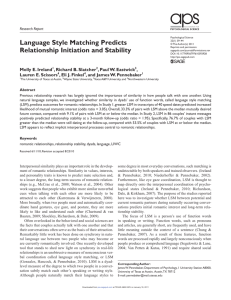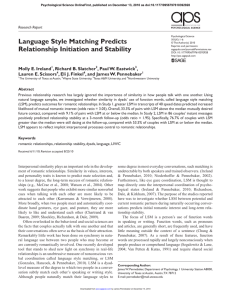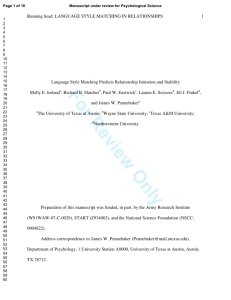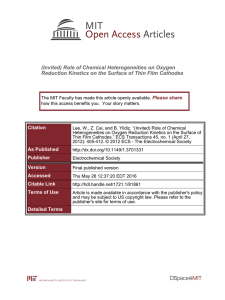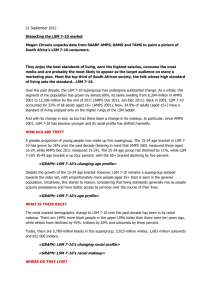prevalence and risk factors of nonalcoholic fatty liver disease
advertisement
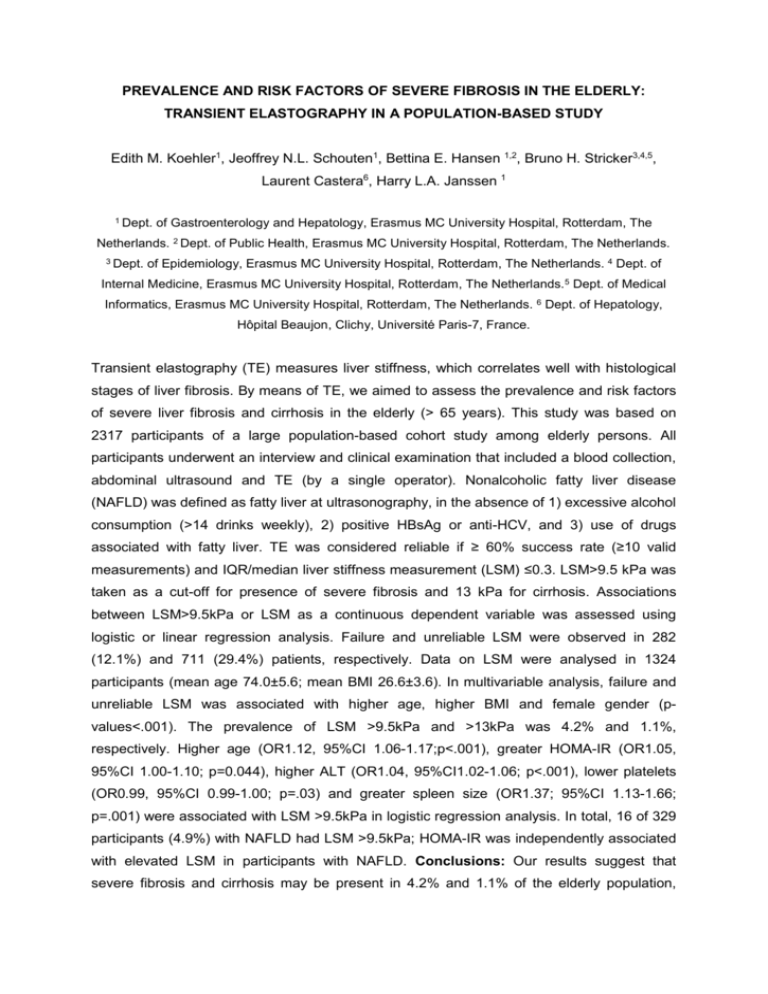
PREVALENCE AND RISK FACTORS OF SEVERE FIBROSIS IN THE ELDERLY: TRANSIENT ELASTOGRAPHY IN A POPULATION-BASED STUDY Edith M. Koehler1, Jeoffrey N.L. Schouten1, Bettina E. Hansen 1,2, Bruno H. Stricker3,4,5, Laurent Castera6, Harry L.A. Janssen 1 1 Dept. of Gastroenterology and Hepatology, Erasmus MC University Hospital, Rotterdam, The Netherlands. 2 Dept. of Public Health, Erasmus MC University Hospital, Rotterdam, The Netherlands. 3 Dept. of Epidemiology, Erasmus MC University Hospital, Rotterdam, The Netherlands. 4 Dept. of Internal Medicine, Erasmus MC University Hospital, Rotterdam, The Netherlands. 5 Dept. of Medical Informatics, Erasmus MC University Hospital, Rotterdam, The Netherlands. 6 Dept. of Hepatology, Hôpital Beaujon, Clichy, Université Paris-7, France. Transient elastography (TE) measures liver stiffness, which correlates well with histological stages of liver fibrosis. By means of TE, we aimed to assess the prevalence and risk factors of severe liver fibrosis and cirrhosis in the elderly (> 65 years). This study was based on 2317 participants of a large population-based cohort study among elderly persons. All participants underwent an interview and clinical examination that included a blood collection, abdominal ultrasound and TE (by a single operator). Nonalcoholic fatty liver disease (NAFLD) was defined as fatty liver at ultrasonography, in the absence of 1) excessive alcohol consumption (>14 drinks weekly), 2) positive HBsAg or anti-HCV, and 3) use of drugs associated with fatty liver. TE was considered reliable if ≥ 60% success rate (≥10 valid measurements) and IQR/median liver stiffness measurement (LSM) ≤0.3. LSM>9.5 kPa was taken as a cut-off for presence of severe fibrosis and 13 kPa for cirrhosis. Associations between LSM>9.5kPa or LSM as a continuous dependent variable was assessed using logistic or linear regression analysis. Failure and unreliable LSM were observed in 282 (12.1%) and 711 (29.4%) patients, respectively. Data on LSM were analysed in 1324 participants (mean age 74.0±5.6; mean BMI 26.6±3.6). In multivariable analysis, failure and unreliable LSM was associated with higher age, higher BMI and female gender (pvalues<.001). The prevalence of LSM >9.5kPa and >13kPa was 4.2% and 1.1%, respectively. Higher age (OR1.12, 95%CI 1.06-1.17;p<.001), greater HOMA-IR (OR1.05, 95%CI 1.00-1.10; p=0.044), higher ALT (OR1.04, 95%CI1.02-1.06; p<.001), lower platelets (OR0.99, 95%CI 0.99-1.00; p=.03) and greater spleen size (OR1.37; 95%CI 1.13-1.66; p=.001) were associated with LSM >9.5kPa in logistic regression analysis. In total, 16 of 329 participants (4.9%) with NAFLD had LSM >9.5kPa; HOMA-IR was independently associated with elevated LSM in participants with NAFLD. Conclusions: Our results suggest that severe fibrosis and cirrhosis may be present in 4.2% and 1.1% of the elderly population, respectively. Elevated LSM was associated with higher age, ALT, HOMA-IR, spleen size and lower platelets. Feasibility of TE in this elderly population is however disputable with either failure or unreliable results in more than one-third of the participants.
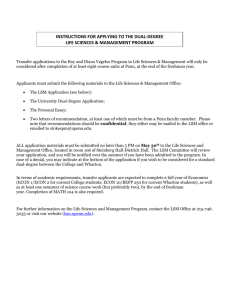

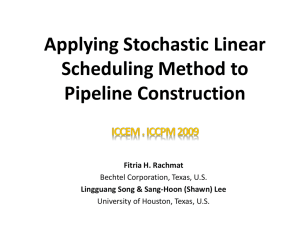
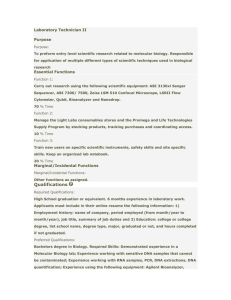
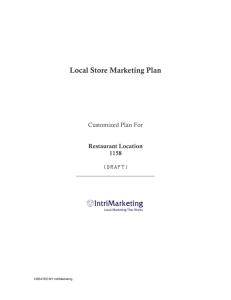
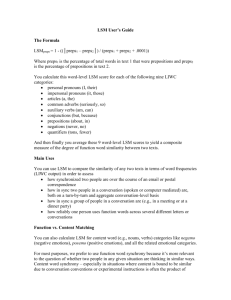
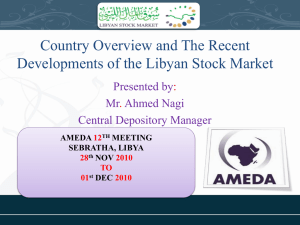
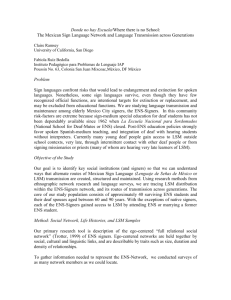
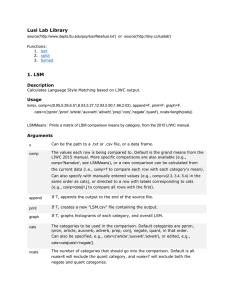


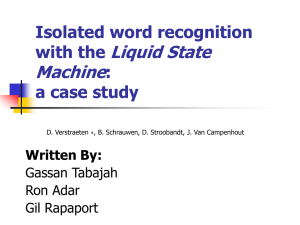

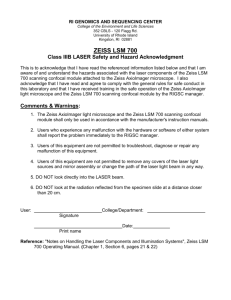

![Electron tunneling characteristics on La[subscript 0.7]Sr[subscript 0.3]MnO[subscript 3] thin-film surfaces at](http://s2.studylib.net/store/data/012174473_1-a972eff4e7334437a8a2bb006b832996-300x300.png)
![Strain Effects on the Surface Chemistry of La[subscript 0.7]Sr[subscript 0.3]MnO[subscript 3]](http://s2.studylib.net/store/data/012073831_1-623f578fbd82e43178b168868bca53d6-300x300.png)
